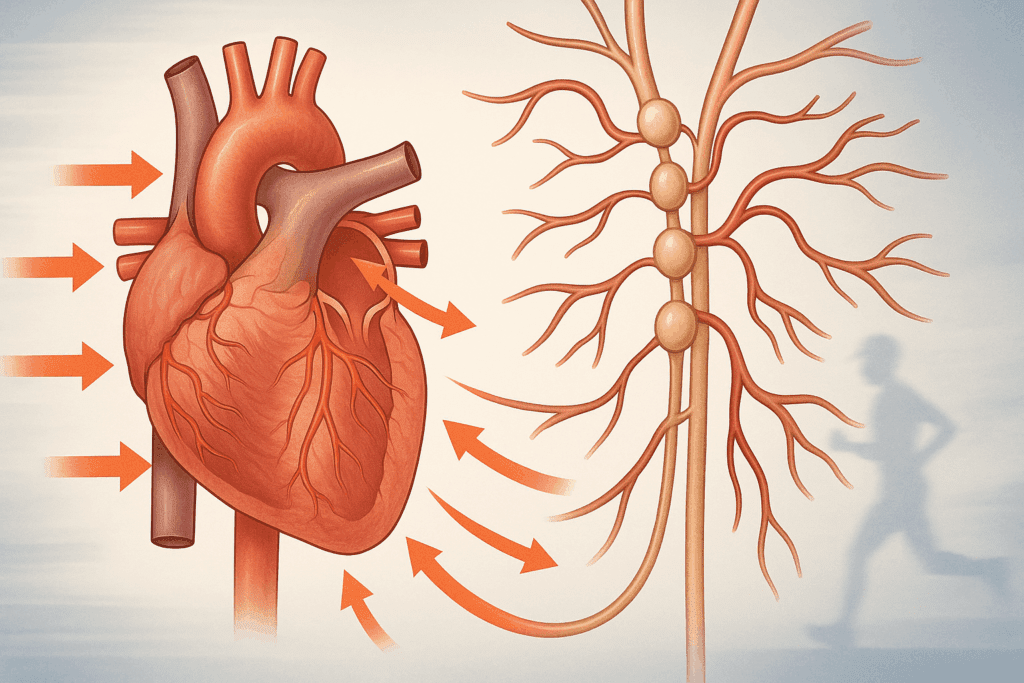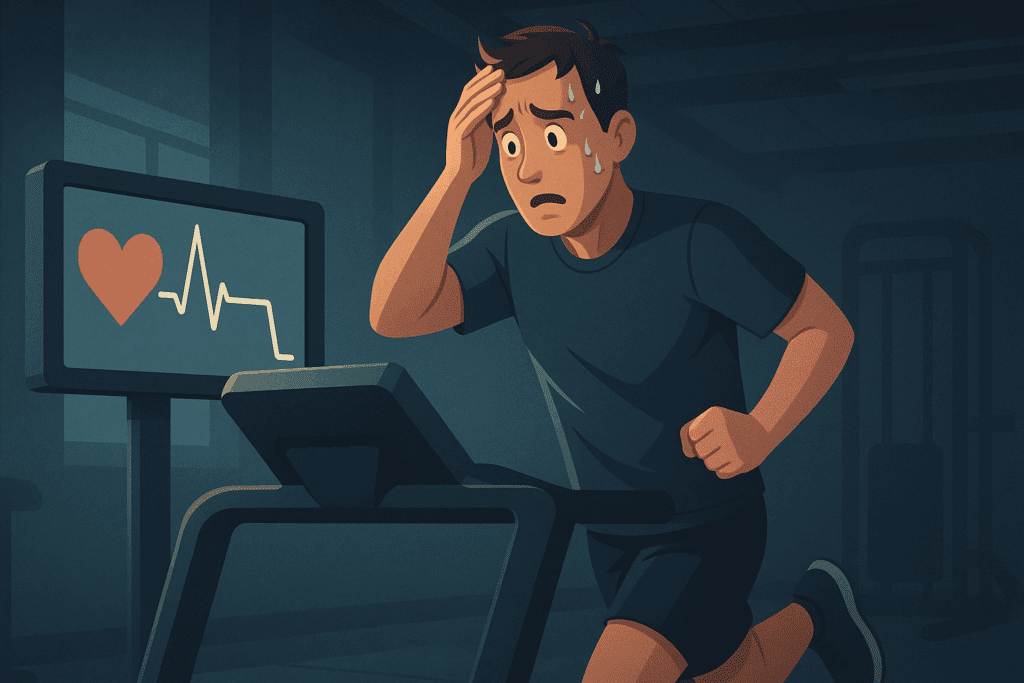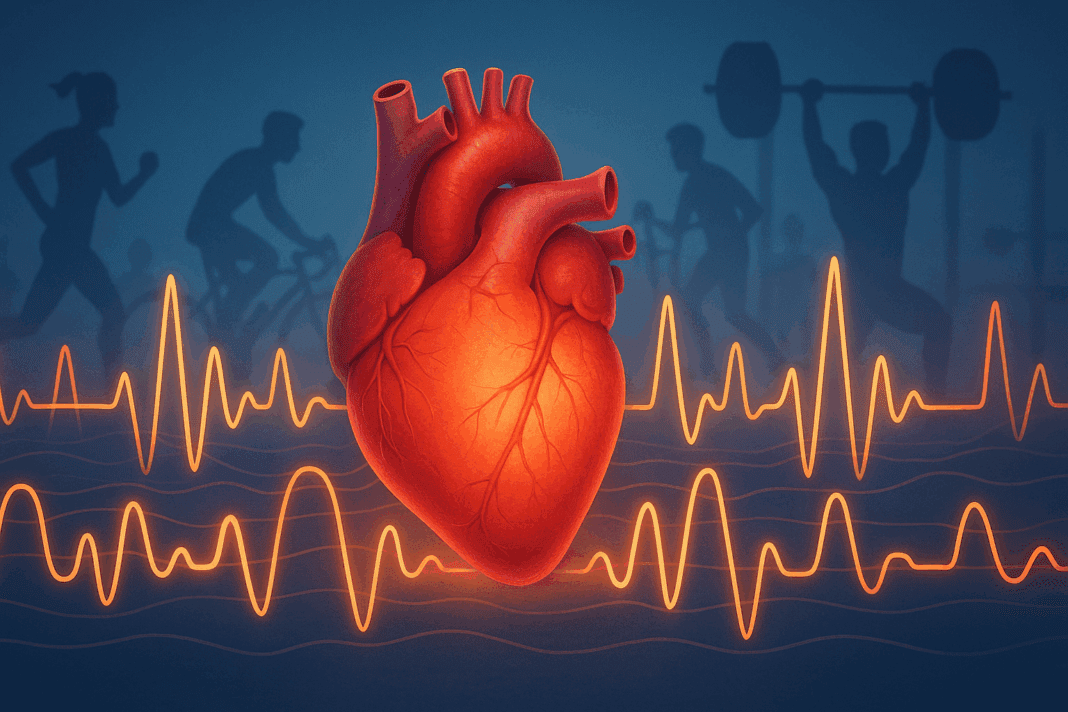Understanding how the body responds to physical exertion is one of the cornerstones of improving fitness and maintaining cardiovascular health. For most people, an elevated heart rate during exercise is a sign that the body is responding as expected to physical stress. But in some cases, individuals notice an unexpected pattern: their heart rate drops during exercise, or it remains unusually low. While a low resting heart rate is typically associated with good health, especially in athletes, a low heart rate during exercise can raise important questions. What does this phenomenon indicate? When is it considered normal, and when should it raise concern?
This in-depth exploration unpacks the physiological mechanisms behind heart rate regulation, the scenarios in which a low heart rate when exercising may be a sign of underlying issues, and how to differentiate between fitness-induced bradycardia and concerning cardiovascular irregularities. For anyone engaged in endurance and stamina training, or those seeking performance enhancement, understanding how your heart responds under strain is essential not only for optimizing athletic output but also for safeguarding long-term heart health.
You may also like: Smart Nutrition Choices for a Healthier Lifestyle: What to Know About Whole Grain Rice and Whole Wheat Rice

The Physiology of Heart Rate Response During Exercise
To grasp why a low heart rate during exercise might occur, it’s important to understand the normal physiological mechanisms at play. The heart rate increases during exercise primarily due to the body’s increased demand for oxygen. As muscles work harder, they require more oxygen-rich blood, and the heart compensates by beating faster. This process is governed by the autonomic nervous system, particularly the sympathetic branch, which triggers the “fight or flight” response. Hormones like adrenaline amplify this effect, causing the heart to pump more vigorously.
In trained athletes or individuals with high cardiovascular fitness, the heart becomes more efficient over time. Their resting heart rates are lower, sometimes dipping below 60 beats per minute without any underlying pathology. During physical activity, their hearts don’t need to accelerate as much to meet the body’s demands. While this adaptation can explain a relatively low heart rate when exercising, there is a point at which this becomes atypical and potentially problematic.

When Heart Rate Drops During Exercise: What It Might Mean
A sudden heart rate drop during exercise can feel disconcerting. This drop might be brief, moderate, or severe. For some, it happens gradually as intensity increases, and for others, it may manifest abruptly. Several potential explanations exist, ranging from benign conditions to more serious issues.
One of the most benign causes is sensor error. Wearable fitness devices, while convenient, can sometimes misread signals due to poor skin contact, movement interference, or electronic glitches. However, if a low heart rate during exercise is confirmed by medically accurate monitoring equipment, it could point to cardiovascular inefficiencies such as chronotropic incompetence, where the heart fails to increase its rate appropriately with physical exertion.
Another possible concern is a condition known as exercise-induced bradycardia. While not inherently dangerous in athletes, in non-athletic populations, this could be symptomatic of conduction abnormalities, such as sick sinus syndrome or atrioventricular (AV) block. These conditions affect the electrical pathways in the heart, leading to delayed or missed beats, and can result in fatigue, dizziness, or even fainting.

Differentiating Athletic Adaptation from Cardiac Dysfunction
Distinguishing between athletic adaptation and underlying cardiac dysfunction requires a nuanced understanding of context. In highly trained individuals, a low heart rate when exercising may reflect efficient oxygen delivery and strong stroke volume, meaning each beat pumps more blood. These individuals often experience no symptoms and maintain high levels of endurance and performance.
However, when a low heart rate is accompanied by symptoms such as shortness of breath, chest discomfort, lightheadedness, or reduced exercise tolerance, it may point to an issue that warrants further investigation. One key diagnostic tool is the cardiopulmonary exercise test (CPET), which assesses how well the heart, lungs, and muscles perform during physical activity. Another useful metric is the heart rate reserve, calculated by subtracting the resting heart rate from the maximum predicted heart rate. If the reserve is insufficient despite intense effort, it may signal chronotropic incompetence.
It’s also critical to consider comorbid factors such as medication use. Beta-blockers and other cardiovascular medications can blunt heart rate response, making it seem as though the heart rate drops during exercise. In these cases, medical supervision is essential to determine whether the effect is expected or excessive.
How Low Is Too Low? Determining Safe Thresholds
The question of how low is too low is complex and depends on multiple variables, including age, fitness level, medical history, and exercise type. Generally, a normal exercise heart rate should fall between 50% and 85% of a person’s maximum heart rate, which is commonly estimated as 220 minus age. When heart rate fails to reach this threshold, or worse, begins to decline despite increased physical exertion, this could indicate a red flag.
A heart rate that falls below 50 beats per minute during intense physical activity, especially if associated with fatigue or dizziness, should be evaluated. For example, a 40-year-old individual with a heart rate of 45 bpm during a moderate to intense workout likely requires a medical assessment, unless they are a seasoned endurance athlete with known bradycardia and no symptoms.
Monitoring one’s rate of perceived exertion (RPE) in conjunction with heart rate data provides additional context. If someone feels they are exerting themselves heavily yet their heart rate remains disproportionately low, this mismatch can indicate a disconnect between cardiovascular response and muscular workload, warranting professional evaluation.

The Role of the Autonomic Nervous System
An often-overlooked factor in heart rate variability during exercise is the autonomic nervous system (ANS), which regulates involuntary functions such as heart rate, digestion, and respiratory rate. Dysautonomia, or dysfunction of the ANS, can result in erratic heart rate behavior, including an inappropriate drop during exertion. For individuals with conditions like postural orthostatic tachycardia syndrome (POTS) or neurocardiogenic syncope, low heart rate during exercise may accompany a host of other symptoms, including fatigue, dizziness, and exercise intolerance.
Evaluating the balance between sympathetic and parasympathetic activity is critical in diagnosing these issues. Tilt-table tests, heart rate variability analysis, and autonomic reflex screening can help clinicians assess the root causes of autonomic imbalance. Often, treatment involves both pharmacological and lifestyle modifications, including graded exercise therapy and increased fluid and salt intake.
Low Heart Rate When Exercising: Impacts on Performance and Safety
From an endurance training and performance enhancement standpoint, an inappropriately low heart rate when exercising can hinder progress. Efficient training requires that the cardiovascular system respond proportionately to physical demands, enabling muscles to receive adequate oxygen and nutrients. When heart rate does not rise appropriately, or worse, begins to fall, the body may experience early fatigue, inefficient energy utilization, and even increased injury risk due to impaired muscular function.
Additionally, consistent low heart rate patterns during workouts can distort training metrics, leading athletes or recreational exercisers to misjudge their effort levels. This misalignment between perceived exertion and actual physiological output can reduce the effectiveness of endurance-building regimens and potentially mask underlying cardiovascular inefficiencies.
It is also worth considering the psychological impacts of noticing that one’s heart rate drops during exercise. This can create anxiety and discourage continued training, particularly if individuals lack the guidance to interpret such data correctly. Education, in this context, becomes a vital tool for empowering people to distinguish between normal fluctuations and signs that merit concern.
When to Seek Medical Advice
Recognizing when to seek medical advice is critical in avoiding preventable complications. Any unexpected, unexplained, or sudden drop in heart rate during exercise that is accompanied by symptoms such as chest pain, dizziness, shortness of breath, or fainting should prompt immediate medical evaluation. Likewise, if the low heart rate when exercising is persistent across multiple sessions, even without symptoms, it may still require a comprehensive cardiovascular workup.
Cardiologists typically begin with a resting electrocardiogram (ECG) and may recommend an exercise stress test or Holter monitor to capture heart rate behavior in real time. Echocardiography can also reveal structural heart issues that may underlie bradycardia. Depending on the findings, treatment options may include medication adjustment, electrophysiology studies, or even the implantation of a pacemaker in severe cases.
Proactive self-monitoring is helpful, but it must be grounded in medically accurate interpretation. For athletes, working with sports cardiologists or physiologists can ensure that data is correctly contextualized and training programs are adjusted accordingly. For the general population, periodic check-ups and a clear understanding of personal cardiovascular baselines are vital.

Training Smarter: Practical Steps for Endurance Athletes
For endurance athletes and those undergoing stamina training, strategic monitoring of heart rate zones is a foundational practice. Understanding personal baselines, maximum heart rate, and recovery heart rate can offer valuable insights into cardiovascular efficiency. Training within optimal heart rate zones helps ensure that workouts are challenging enough to improve fitness without veering into unsafe territory.
If a low heart rate during exercise is observed consistently but without symptoms, it may still be beneficial to alter training intensity, frequency, or modality. Cross-training, incorporating high-intensity interval training (HIIT), or adjusting rest periods can help stimulate cardiovascular responsiveness. Nutrition, hydration, and sleep quality also play substantial roles in how the heart reacts to exertion and must not be overlooked.
Additionally, understanding how environmental factors such as altitude, temperature, and humidity affect heart rate variability helps athletes prepare better for competition and reduce the likelihood of misinterpreting benign fluctuations as pathological signs. Wearable technology can be a valuable ally here, provided users are educated in its limitations and know when to rely on clinical evaluation instead.
Preventive Strategies for Long-Term Heart Health
Addressing a low heart rate when exercising begins with a comprehensive approach to cardiovascular health. Preventive strategies should focus on maintaining healthy blood pressure, blood glucose levels, and lipid profiles, as all of these factors influence heart rate regulation. Regular aerobic exercise tailored to fitness level is essential, but so is building a foundation of strength, flexibility, and mental resilience.
Stress management techniques such as mindfulness meditation, breathwork, and yoga can support autonomic balance and promote healthy heart rate variability. Dietary patterns rich in omega-3 fatty acids, antioxidants, magnesium, and potassium support optimal cardiovascular function. Avoiding excessive caffeine, alcohol, and over-the-counter stimulants also helps prevent interference with natural heart rate regulation.
Moreover, understanding genetic predispositions and family history allows individuals to proactively screen for conditions like arrhythmias or structural heart disease. Early intervention remains the most effective form of treatment, and regular cardiovascular screenings become especially important for those entering midlife or with existing health concerns.

FAQ: Understanding Low Heart Rate During Exercise and Its Impact on Health and Performance
1. Can dehydration cause a low heart rate during exercise?
Yes, dehydration can significantly influence cardiovascular responses during exertion, potentially leading to a low heart rate when exercising. As fluid levels drop, blood volume decreases, making it harder for the heart to circulate oxygenated blood efficiently. In some cases, the body may respond with a paradoxical decrease in heart rate, especially if dehydration is severe or accompanied by electrolyte imbalance. When this occurs, individuals might feel lightheaded or notice their heart rate drops during exercise despite increased physical effort. Staying properly hydrated before, during, and after activity is vital for maintaining safe and effective heart rate regulation.
2. How do sleep patterns affect heart rate drops during exercise?
Poor sleep quality or chronic sleep deprivation can disrupt autonomic nervous system function, which plays a central role in regulating heart rate. When sleep is insufficient, cortisol levels remain elevated, and parasympathetic regulation becomes less efficient, making the heart rate more erratic. This can lead to unexpected heart rate drops during exercise or an inability to increase heart rate appropriately. Over time, this dysregulation may not only reduce workout effectiveness but also mask signs of fatigue or overtraining. Optimizing sleep hygiene—such as maintaining consistent bedtimes and minimizing blue light exposure—can help stabilize cardiovascular response during physical exertion.
3. Are women more likely to experience a low heart rate when exercising?
Sex-based physiological differences do influence cardiovascular response, but the risk of a low heart rate during exercise is more closely related to individual conditioning, hormonal factors, and cardiac health than to gender alone. That said, hormonal fluctuations—especially during the menstrual cycle or menopause—can impact heart rate variability and perceived exertion. Some women report noticing that their heart rate drops during exercise more frequently during certain hormonal phases, possibly due to vasodilation or hormonal effects on cardiac output. Tracking personal trends and correlating them with training logs and menstrual cycles may help identify patterns unique to female athletes.
4. Can psychological stress contribute to low heart rate during exercise?
Absolutely. Chronic stress impacts the autonomic nervous system and can lead to inconsistent or suppressed heart rate responses. While acute stress tends to elevate heart rate due to adrenaline, chronic mental strain can lead to parasympathetic overcompensation or vagal overactivity. This imbalance may result in a low heart rate when exercising, particularly if the individual is also fatigued or underperforming. Techniques such as heart rate variability training, biofeedback, and mindfulness can help recalibrate the nervous system and promote more consistent cardiovascular responses during workouts.
5. Is it dangerous if heart rate drops suddenly after exercise?
A rapid decline in heart rate after stopping exercise is generally a good sign of cardiovascular fitness. However, if the heart rate drops during exercise or plummets immediately after while the person is still exerting effort or standing upright, it may indicate autonomic dysfunction or a form of exercise intolerance. In some rare cases, conditions like vasovagal syncope or orthostatic hypotension may cause fainting post-exercise due to sudden drops in heart rate and blood pressure. If the pattern of low heart rate when exercising or right afterward is recurrent and accompanied by symptoms like dizziness, nausea, or blurred vision, a medical evaluation is warranted.
6. How does high-altitude training affect heart rate drops during exercise?
Training at altitude introduces hypoxic conditions that initially elevate heart rate. However, as the body adapts by producing more red blood cells and increasing oxygen-carrying capacity, some athletes may notice a lower heart rate when exercising at the same intensity. In well-acclimatized individuals, this adaptation is normal, but if the heart rate drops during exercise too quickly or erratically, it may suggest over-acclimatization or maladaptation. Monitoring blood oxygen saturation and balancing training load are key to avoiding detrimental cardiovascular effects in high-altitude environments.
7. Can certain diets influence heart rate regulation during exercise?
Yes, nutrition significantly affects how the heart responds to physical stress. Low-carbohydrate or ketogenic diets, for instance, may lead to a temporary drop in heart rate during exercise as the body transitions from burning glucose to ketones. Additionally, deficiencies in magnesium, potassium, or calcium can affect the heart’s electrical conduction, increasing the likelihood of a low heart rate when exercising. Athletes experimenting with dietary changes should pay close attention to heart rate patterns, especially during high-intensity sessions, and consult with a sports nutritionist when necessary.
8. How can heart rate training zones be adjusted for those with consistently low exercise heart rates?
For individuals who naturally experience a low heart rate during exercise, traditional heart rate zone formulas may not be accurate. Custom zones based on lactate threshold or ventilatory threshold testing are more precise. Using a heart rate monitor in conjunction with perceived exertion and breath control can help recalibrate training zones to match true effort. If heart rate drops during exercise despite increasing effort, it may indicate the need to modify intensity or incorporate recovery protocols. Personalized metrics are especially important for athletes with bradycardia or those on medications that blunt heart rate.
9. What role does biofeedback play in managing a low heart rate when exercising?
Biofeedback provides real-time insights into physiological responses, allowing users to modulate their autonomic activity consciously. Techniques that incorporate breathing control, HRV (heart rate variability) training, and cognitive focus can help mitigate unexpected heart rate drops during exercise. This is especially useful for those with anxiety-driven dysregulation or vagal overactivation. Over time, biofeedback tools can train individuals to identify the early signs of a heart rate decrease and proactively adjust pacing or breathing. Emerging wearable technologies now offer app-based guided sessions that enhance this process, making biofeedback more accessible for endurance athletes and those in cardiac rehab.
10. Are there new technologies that help identify abnormal heart rate patterns during exercise?
Yes, advanced wearables now go beyond basic tracking to detect trends that may suggest abnormal cardiovascular responses. Devices that measure pulse wave velocity, HRV, and oxygen saturation alongside heart rate can provide a more comprehensive view of heart function. If someone suspects their heart rate drops during exercise inappropriately, continuous data logging and AI-assisted interpretation can flag these patterns for further review. Some platforms even offer personalized insights based on long-term metrics, alerting users to subtle declines in cardiac performance before symptoms arise. As machine learning integrates deeper into fitness tech, identifying a low heart rate when exercising will become more precise and actionable.
Conclusion: Why Monitoring a Low Heart Rate During Exercise Matters for Your Performance and Heart Health
A low heart rate during exercise is not inherently harmful, but context is everything. In highly conditioned athletes, it often reflects cardiovascular efficiency. In others, it may signal an underlying condition that limits endurance, affects performance, or places the heart at risk. When the heart rate drops during exercise without a clear explanation or expected recovery, this deviation should not be ignored.
As the boundaries between fitness and health continue to blur, especially with the rise of wearable technology, understanding the significance of heart rate patterns becomes increasingly important. Whether you’re training for a marathon, recovering from illness, or simply striving for a healthier lifestyle, tracking and interpreting heart rate data with medical accuracy can help you train smarter, protect your cardiovascular system, and optimize your endurance potential.
Ultimately, listening to your body—and your heart—is the most effective performance strategy of all.
Was this article helpful? Don’t let it stop with you. Share it right now with someone who needs to see it—whether it’s a friend, a colleague, or your whole network. And if staying ahead on this topic matters to you, subscribe to this publication for the most up-to-date information. You’ll get the latest insights delivered straight to you—no searching, no missing out.
Further Reading:
Low Heart Rate: What It Is and When to Worry

